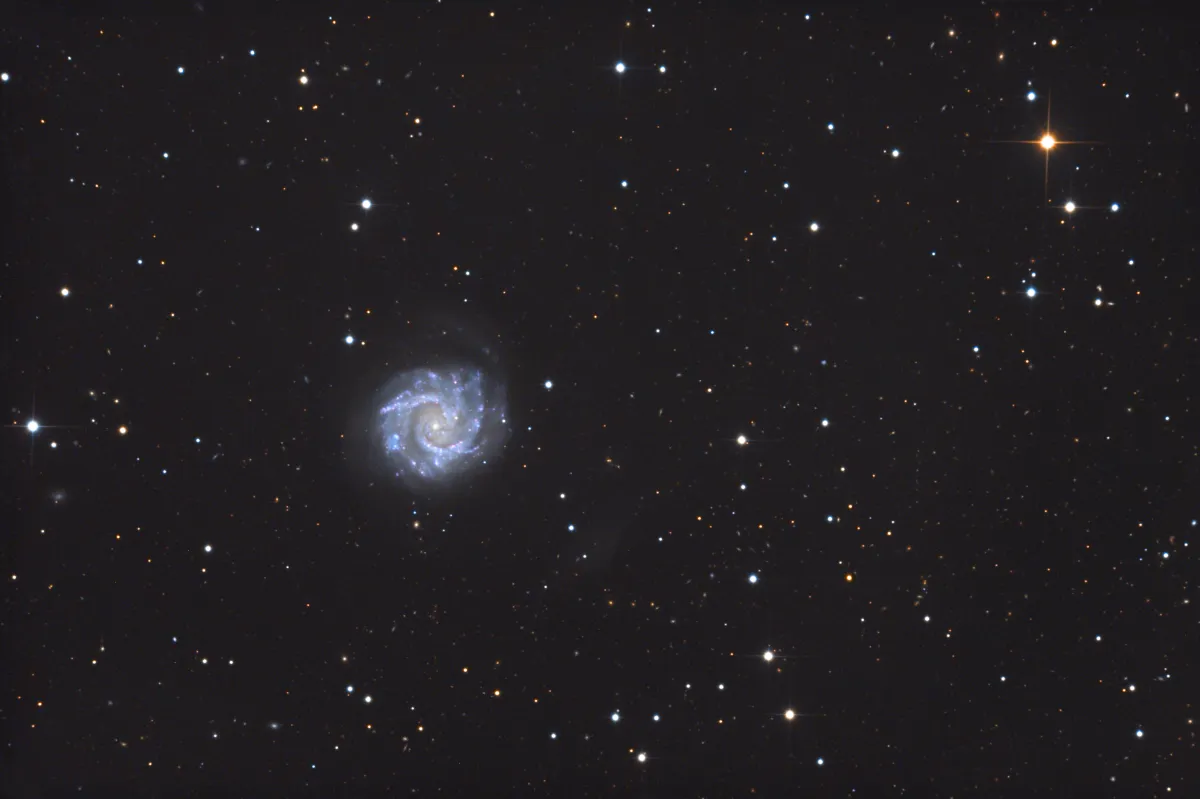Galaxy NGC 3631 (Arp 27)

History
This galaxy was discovered on 14 April 1789 by the famous German-British astronomer William Herschel using his selfmade reflecting telescope of 20 foot focal length (aperture 18.7 inch) in Slough near Windsor in Great Britain. He cataloged it as «bright nebula» (class I) with the designation I 226. He noted: «considerably bright, round, small bright resolvable nucleus and very faint chevelure, 4' diameter.» [465] His son John listed it as h 858 (GC 2379) and noted in his catalog of 1833: «pretty bright, large, round, suddenly much brighter in the middle, 2' diameter.» [466] In his catalogue of 1864 John Herschel describes it as «pretty bright, large, round, suddenly very brighter in the middle, barely resolvable nucleus.» [467] John L. E. Dreyer listed this galaxy as NGC 3631 in his «New General Catalogue», published in 1888. [313]
Halton Arp divided his «Atlas of Peculiar Galaxies», published in 1966, into groups based on purely morphological criteria. The galaxy here received the designation Arp 27 (APG 27) as a galaxy with «one heavy arm». He also noted: «Note straight arms, absorption tube crossing from inside to outside of S arm.» [199]

Physical Properties
NGC 3631 is a grand-design spiral galaxy of type SAc. The inclination angle of the disc is about 17°, so we see it nearly face-on. The two-armed spiral structure seems to be well defined in optical light, but it has a number of irregularities, especially in the outer parts of the disc. The two-armed spiral structure of NGC 3631 has a wave nature. The observed vertical gas motions represent motions in a spiral density wave. The radius of corotation is about 42 arcsec, or 3.2 kpc. There is evidence of two anticyclonic and four cyclonic vortices near corotation in a frame of reference rotating with the spiral pattern. The centres of the anticyclones lie between the observed spiral arms. The cyclones lie close to the observed spirals, but their centres are shifted from the maxima in brightness. [523, 524]
| Designation | NGC 3631 |
| Type | Gx (Sc) |
| Right Ascension (J2000.0) | 11h 21m 02.7s |
| Declination (J2000.0) | +53° 10' 11" |
| Diameter | 5 × 3.7 arcmin |
| Photographic (blue) magnitude | 11.0 mag |
| Visual magnitude | 10.4 mag |
| Surface brightness | 13.7 mag·arcmin-2 |
| Position Angle | 114° |
| Redshift (z) | 0.003856 |
| Distance derived from z | 16.29 Mpc |
| Metric Distance | 21.600 Mpc |
| Dreyer Description | pB, L, R, svmbMrN |
| Identification, Remarks | WH I 226; h 858; GC 2379; UGC 6360; MCG 9-19-47; CGCG 268-21; Arp 27; VV 363; IRAS 11181+5326 |
Finder Chart
The galaxy NGC 3631 is located in the constellation Ursa Maior. The constellation is circumpolar, but is highest at night from November to August, which is best for observing.
